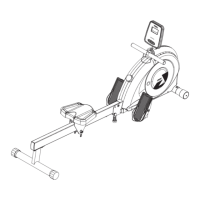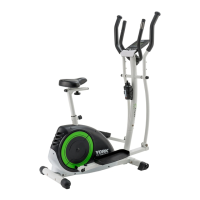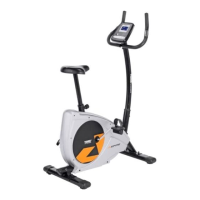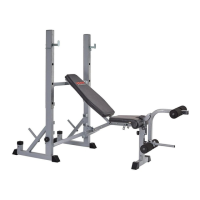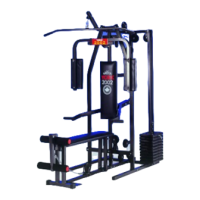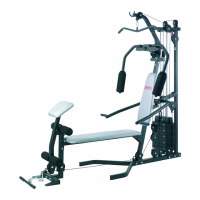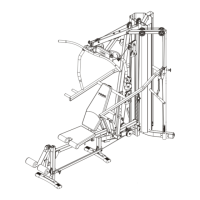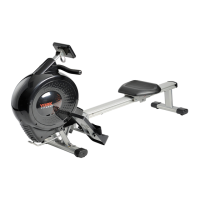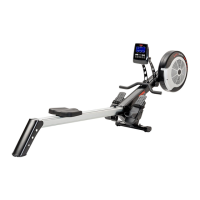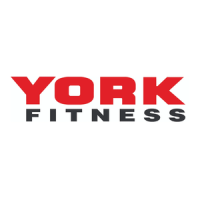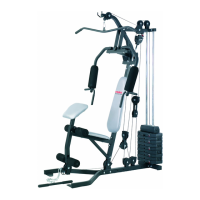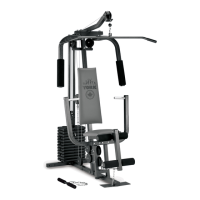21
Starting and Finishing Your Workout
Begin and end each workout with a Warm Up / Down session - a few minutes of stretching to help prevent
strains, pulls and cramps.
Correct Crosstraining form
To start using the cross trainer, simply stand on the foot pedals with the front of your shoes close to the front edge of the pedal cap. Place
your hands at a comfortable position on the handlebars. Simply move your highest foot forward and follow the natural path of the machine.
Start on a load level that is comfortable to familiarize yourself with the machine. Once you are comfortable, start adjusting the load level to
achieve the workout desired.
Forward and Reverse: The cross trainer can be used in the forward and reverse direction to vary the muscles that you workout. This will also
vary your workout helping you to stay motivated. To change directions, simply slow the pedals down until they stop and switch directions.
Load Level Adjustment: The load level of cross trainer can be changed at any time during your workout. Adjusting your load level will allow
you to increase or decrease your intensity level.
How Long Should I Exercise For?
That really depends on your current level of tness. If you’re just starting out on a new exercise program, you should start gradually and
build up - do not try to do too much too quickly. 30 minutes, 3 times a week should be enough.
Don’t push yourself too hard - you should never feel exhausted during or following exercise.
Heart Rate Training
To get the most out of your new piece of tness equipment and see the best results from your training you should exercise at the right level
of eort, and that means listening to your heart! Work out to a target heart rate means you can direct your workout to achieve dierent
goals:
Good health - For those wishing to improve quality of life and general well being. Your sessions will need to be done at an intensity of
between 50 - 60% of your estimated maximum heart rate, should last about 30 minutes and can be done on most days of the week.
Weight loss - To see a signicant reduction in body fat, your sessions must be a little more intense - between 60 and 70% of your estimated
maximum heart rate. These sessions can also be performed on most days of the week for up to 30 minutes.
Improving tness levels - These sessions should be performed at 70 - 80% of your estimated maximum heart rate and can also involve
bouts of interval training that would have your heart rate peaking for short times near your maximum heart rate level. These are intense
sessions and will require at least a 48 hour rest between sessions.
Calculating Your Target Heart Rate
First, you need to nd your estimated maximum heart rate using the formula “220 minus your age in years”. So, if you are 35 years old your
estimated maximum heart rate is:
• 220 - 35 = 185 beats per minute (bpm)
Next, to calculate your target heart rate, simply multiply your estimated maximum heart rate (185bpm) by the applicable percentage. So, if
your goal is better health:
• 185 x 60% = 111bpm
NOTE: The important issue to remember with all estimated calculations is that they are just estimates - if you don’t feel comfortable
exercising at your target then reduce it to a level you are comfortable with.
Heart rate training requires you to monitor your heart rate throughout the workout. For this we recommend using a chest strap (if your machine
has a wireless receiver) or a heart rate monitor. For more information please get in touch using the Contact Us details.
fitness guide
ALWAYS CONSULT YOUR DOCTOR BEFORE UNDERTAKING A NEW EXERCISE REGIME. IF YOU
EXPERIENCE NAUSEA, DIZZINESS OR OTHER ABNORMAL SYMPTOMS DURING EXERCISE, STOP AT ONCE
AND CONSULT YOUR DOCTOR.
!
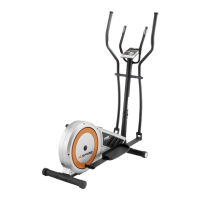
